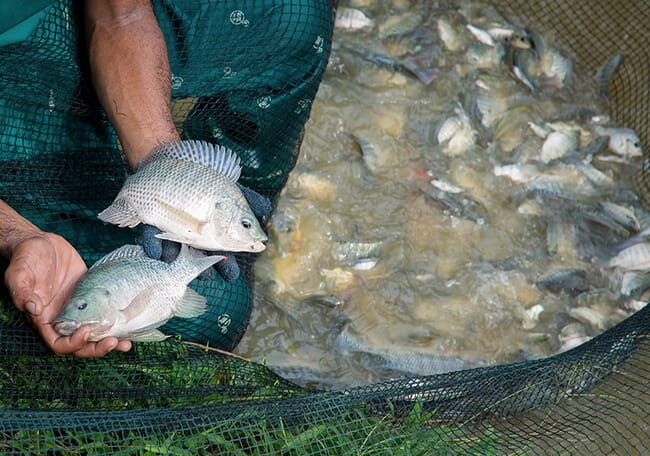In a study published in the journal Aquaculture, researchers from University of Edinburgh’s Roslin Institute and WorldFish analysed the genes of 1,821 genetically improved farmed tilapia (GIFT), which were tagged and placed in a pond that had an outbreak of TiLV.

The fish used in this experiment were members of 124 families, and the team discovered that there was a large variation in family survival. Some family groups had no deaths, whereas others found to have a 100 percent death rate.
The team then used statistical models to show that resistance to the virus was very heritable, which means that selective breeding to produce more resistant tilapia strains is likely to be effective.
The variations in TiLV resistance were found to be independent of genetic variation in growth, meaning that any future breeding programmes for GIFT that produce fish resistant to TiLV will not adversely affect the growth of the fish, and will benefit farmers’ yields.
The GIFT strain has been selectively bred to be fast-growing and adaptable to a wide range of environments. The strain is produced in at least 14 countries, helping to reduce poverty and hunger.
Professor Ross Houston, lead author and personal chair of aquaculture genetics at the Roslin Institute, said: “Tilapia lake virus poses a real problem to fish farmers worldwide, impacting on the livelihoods and food security of millions of people. This research is the result of a long-term collaboration between Roslin and WorldFish, and is the first step to breeding tilapia strains with improved resistance to the virus.”
Dr Michael Phillips, director of aquaculture and fisheries sciences at WorldFish and the CGIAR Research Program on Fish Agri-Food Systems, said: “This is a truly exciting finding at the frontier of fish genetics. WorldFish will build on this research, with our partners in the research, donor and investment community, to accelerate the further development of resilient TiLV resistant tilapia strains and their wide accessibility to small scale fish farmers.”
Further information on TiLV
- Tilapia are the most farmed variety of fish after carps, and are worth nearly $10 billion to the global economy. They are also a vital protein source in Africa, Asia and South America
- Since its detection in 2014, tilapia lake virus (TiLV) has ravaged tilapia populations – causing mortalities of up to 90 percent – in 16 countries across three continents.
- Clinical signs of the virus observed in representative tilapia include behavioural changes, skin damage such as skin erosion, discoloration, skin haemorrhages and loss of scales, eyeball protrusion (exophthalmia) and abdominal swelling. There are currently no treatments or vaccines for TiLV.
- The full study can be accessed here.



